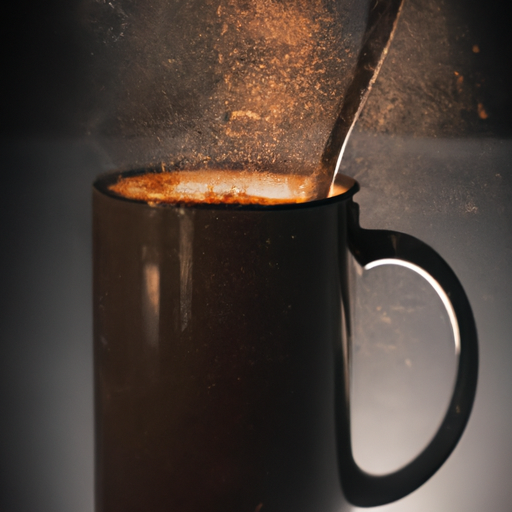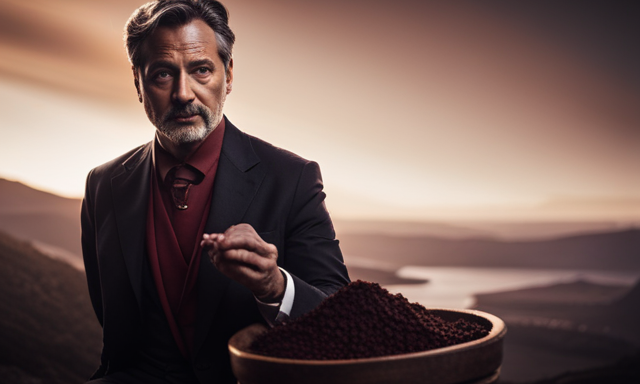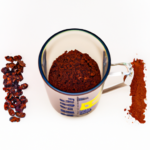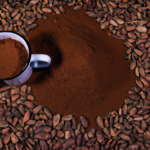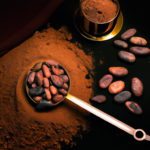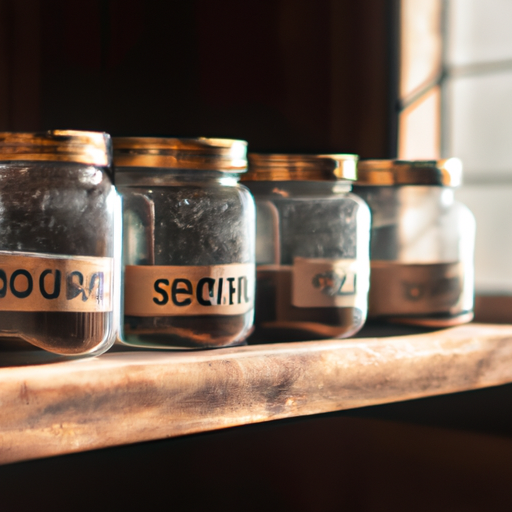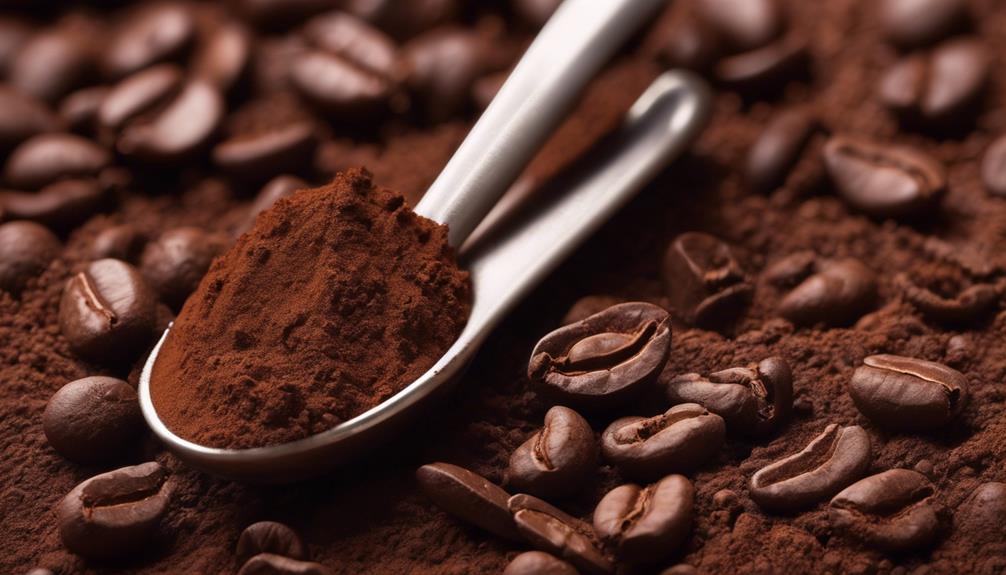Oh, the delights of chocolate! It’s that scrumptious indulgence that always manages to make me happy. But have you ever pondered the caffeine levels in raw cacao powder? Well, let me inform you, my friend, it’s a rather fascinating subject.
You see, cacao, the magical bean from which chocolate is made, contains a natural source of caffeine. And in this article, we’re going to dive deep into the world of raw cacao powder and explore just how much caffeine it contains.
But before we get into the nitty-gritty details, let’s take a step back and understand the origins of cacao and its caffeine content. We’ll uncover the health benefits of raw cacao powder and how caffeine affects our bodies. We’ll even compare the caffeine levels in raw cacao powder to other sources, so you can make informed choices.
So, buckle up and get ready to discover the wonders of raw cacao powder and its caffeine content. It’s going to be a wild ride!
Key Takeaways
- Raw cacao powder contains caffeine
- Consumption of raw cacao powder should be limited to one to two tablespoons per day
- Consider overall caffeine intake from other sources
- Pay attention to body’s reaction to raw cacao powder consumption and adjust intake accordingly
The Origins of Cacao and its Caffeine Content
The caffeine content of raw cacao powder can vary depending on its origins. It is influenced by factors such as the specific variety and growing conditions. The origins of cacao cultivation can be traced back to ancient civilizations in Mesoamerica. It was highly valued for its medicinal and ceremonial purposes. The Olmec, Maya, and Aztec civilizations consumed cacao in various forms, recognizing its stimulating effects. Today, cacao is cultivated in different regions around the world, including South America, Africa, and Asia. Each region and variety of cacao can have slightly different caffeine levels, influenced by factors such as soil composition, climate, and processing methods. Understanding the caffeine levels in raw cacao powder is essential for those seeking to incorporate it into their diet or for individuals sensitive to caffeine.
Understanding the Caffeine Levels in Raw Cacao Powder
Did you know that the caffeine content in unprocessed cacao powder can vary?
It’s important to understand the caffeine levels in raw cacao powder, especially if you are sensitive to caffeine or have a low caffeine tolerance.
The amount of caffeine in cacao powder depends on various factors, such as the origin of the cacao beans and the processing methods used.
Generally, raw cacao powder contains about 12 milligrams of caffeine per tablespoon. However, the actual caffeine absorption may vary from person to person, depending on individual factors like metabolism and caffeine tolerance.
It’s always a good idea to be aware of your own caffeine sensitivity and adjust your intake accordingly.
Now, let’s explore the health benefits of raw cacao powder.
The Health Benefits of Raw Cacao Powder
Indulging in this heavenly treat will provide you with a burst of antioxidants and a mood-boosting effect, making you feel like you’re floating on cloud nine.
Raw cacao powder is not only rich in flavor, but it also offers numerous health benefits. One of the key benefits is its impact on mood. Raw cacao powder contains compounds that stimulate the production of endorphins and serotonin, which are known as ‘feel-good’ chemicals in the brain. These chemicals help improve mood and promote a sense of well-being.
Additionally, raw cacao powder is packed with antioxidants, which help protect our cells from damage caused by free radicals. These antioxidants have been linked to a reduced risk of chronic diseases, such as heart disease and certain types of cancer.
Now, let’s explore how caffeine in raw cacao powder affects the body.
How Caffeine in Raw Cacao Powder Affects the Body
The caffeine in raw cacao powder can have both positive and negative effects on the body. On one hand, it provides a natural boost of energy, making it a great pick-me-up during the day. However, consuming raw cacao powder close to bedtime may interfere with sleep patterns. It’s important to be mindful of this impact.
Furthermore, caffeine can stimulate the digestive system, promoting bowel movements. This can potentially cause discomfort for individuals with sensitive stomachs.
Now, let’s dive into comparing the caffeine levels in raw cacao powder to other sources.
Comparing Caffeine Levels in Raw Cacao Powder to Other Sources
When comparing the caffeine levels in raw cacao powder to other sources, it’s surprising to learn that a single serving of dark chocolate actually contains more caffeine than a cup of coffee. However, it’s important to note that while raw cacao powder does contain caffeine, its levels are generally lower than those found in coffee. On average, a tablespoon of raw cacao powder contains around 12 milligrams of caffeine, whereas an 8-ounce cup of coffee contains approximately 95 milligrams.
It’s worth mentioning that the impact of caffeine on sleep quality can vary from person to person. Some individuals may experience sleep disturbances if they consume caffeine close to bedtime, while others may not be affected.
With that in mind, let’s now transition into the subsequent section about the relationship between cacao and energy boost. In this section, we will explore the potential benefits of consuming raw cacao powder for a natural energy boost.
The Relationship Between Cacao and Energy Boost
If you’re looking for a natural pick-me-up to power through your day, imagine savoring the rich, velvety taste of dark chocolate and feeling a surge of invigorating energy coursing through your veins. Cacao, the main ingredient in dark chocolate, has been linked to enhanced mental focus and improved athletic performance. Here are four ways cacao can boost your energy levels:
-
Cacao contains theobromine, a stimulant that can provide a similar energy boost to caffeine, but without the jitters or crash.
-
The high antioxidant content in cacao helps improve blood flow to the brain, increasing mental clarity and focus.
-
Cacao is rich in magnesium, which plays a crucial role in energy production and can help combat fatigue.
-
The natural compounds found in cacao, such as flavanols and phenylethylamine, have been shown to enhance mood and increase motivation.
Understanding the relationship between cacao and energy can help you harness its benefits. In the next section, we will explore the factors that influence caffeine levels in raw cacao powder.
Factors that Influence Caffeine Levels in Raw Cacao Powder
Indulge in the tantalizing secrets that lie within raw cacao powder and uncover the hidden factors that dance with the caffeine levels, igniting a symphony of energy within.
When it comes to caffeine levels in raw cacao powder, there are several factors that come into play. One major factor is the variety of cacao bean used. Different varieties have varying levels of caffeine naturally present.
Additionally, the processing techniques used can also influence the caffeine content. Roasting the cacao beans at higher temperatures tends to decrease the caffeine levels, while lower temperature processing methods may preserve more of the caffeine.
Other factors such as soil composition, climate, and harvesting practices can also impact the caffeine levels in raw cacao powder. Understanding these factors can help you make informed choices when selecting your cacao powder.
Transitioning into the subsequent section about consuming raw cacao powder moderately for optimal benefits, it’s important to consider these factors for a balanced approach.
Consuming Raw Cacao Powder Moderately for Optimal Benefits
To fully savor the delightful advantages of raw cacao powder, it’s key to find the perfect balance and enjoy it in moderation, allowing its optimal benefits to unfold. When consumed moderately, raw cacao powder can be a valuable addition to a healthy diet, especially for those looking to lose weight. Its high fiber content helps promote feelings of satiety, reducing the chances of overeating. Additionally, raw cacao powder is rich in antioxidants that can support overall health and well-being. To incorporate cacao powder into a weight loss regimen, it can be added to smoothies, oatmeal, or used as a healthy alternative in baking. Remember, moderation is key to reaping the benefits without overindulging. In the next section, we will explore the conclusion: enjoying the delights of raw cacao powder responsibly.
Conclusion: Enjoying the Delights of Raw Cacao Powder Responsibly
In conclusion, enjoying the delights of raw cacao powder responsibly allows for a delightful and guilt-free addition to a healthy lifestyle. When consumed moderately, raw cacao powder can provide various health benefits such as improved mood, increased energy, and enhanced cognitive function.
To enjoy raw cacao powder responsibly, it is important to follow these guidelines:
-
Moderation is key: Limit your intake to a reasonable amount, typically one to two tablespoons per day.
-
Be mindful of caffeine: Raw cacao powder contains caffeine, so it’s important to consider your overall caffeine intake from other sources.
-
Check for allergies: If you have any known allergies to chocolate or cocoa products, it’s best to consult with a healthcare professional before incorporating raw cacao powder into your diet.
-
Listen to your body: Pay attention to how your body reacts to consuming raw cacao powder and adjust your intake accordingly.
By following these guidelines, you can fully enjoy the delights of raw cacao powder while minimizing any potential risks.
Frequently Asked Questions
How does the caffeine content in raw cacao powder compare to other caffeinated beverages like coffee or tea?
Compared to coffee or tea, the caffeine content in raw cacao powder is generally lower. While energy drinks may provide a quick energy boost, the effects of caffeine in cacao on the body are milder and more sustainable.
Can consuming raw cacao powder in the evening affect sleep quality?
Consuming raw cacao powder in the evening can impact sleep quality due to its caffeine content. To minimize the impact, avoid consuming it close to bedtime or opt for cacao powder with lower caffeine levels.
Are there any potential side effects of consuming raw cacao powder due to its caffeine content?
Consuming raw cacao powder can have potential health benefits, but it’s important to be aware of its caffeine content. Excessive intake can lead to side effects like jitteriness and sleep disturbances. Stick to the recommended daily intake.
Does the caffeine content in raw cacao powder vary depending on the brand or quality?
The caffeine content in different brands of raw cacao powder can vary. This variation can impact the taste of the powder. It is important to check the label or contact the manufacturer for specific caffeine information.
Is it safe for children or pregnant women to consume raw cacao powder due to its caffeine content?
It’s important to note that raw cacao powder does contain caffeine, but in much smaller amounts compared to energy drinks. However, pregnant women should still be cautious as high caffeine intake may have negative effects on the developing fetus.
What Is the Caffeine Content in Raw Cacao Powder?
Raw cacao powder contains a natural caffeine content in cacao, approximately 12-20 milligrams per tablespoon. This is significantly less than the caffeine found in coffee, making raw cacao a popular choice for those looking for a natural energy boost without the jitters.
Conclusion
In conclusion, savoring the delights of raw cacao powder responsibly can bring numerous benefits.
From its origins to understanding its caffeine content, we have explored the fascinating world of cacao.
Its rich flavor and health benefits make it a popular choice for many.
By consuming it moderately, we can enjoy the energy boost it provides while keeping our caffeine intake in check.
So, indulge in this delectable treat and relish the rewards it brings.
Remember, moderation is the key to harnessing the power of raw cacao powder.

